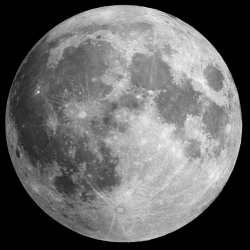
Google X has many, many irons in the fire. Its two most well-known are the self-driving car and Google Glass, the futuristic data-visor that Google seems to be quietly at work remixing into its next manifestation. But that’s not all. Not by a long shot.
Project Loon
The craziest thing about Project Loon isn’t the idea, to create a network of Internet-connected balloons floating at 60,000 feet. It’s how close it is to becoming reality. The balloons are designed to fly roughly twice as high as commercial air traffic, where ideally they’ll hover about in the stratosphere for more than 100 days in one flight. Google is working on that last bit as we speak.
“Signals are transmitted from the balloons to a specialized Internet antenna mounted to the side of a home or workplace, or directly to LTE-enabled devices. Web traffic that travels through the balloon network is ultimately relayed to our local telecommunications partners’ ground stations, where it connects to pre-existing Internet infrastructure.”
It sounds like science fiction, but Project Loon is well on its way to serving the global communities Google wishes to connect. “Loon is a huge undertaking, and we’ve made huge progress,” Google’s Sundar Pichai told a packed room at Mobile World Congress in early March. “Two years ago, we could barely keep the balloon up for three days, and it served 3G.”
Project Wing
A low-power global Internet network isn’t Google X’s only skyborne undertaking. As we noted at the time, Google X revealed its plans for Project Wing, an autonomous drone delivery system, with an in-depth report in the Atlantic last August. It’s already been two years in the making. Last year, the delivery system was being tested out in low-density parts of Australia, where the mini-helicopter hybrids whisked everything from cattle vaccines to first aid kits toward their targets.
Makani: Wind turbines, reimagined
If Internet balloons and drone-delivered dog treats weren’t enough crazy flying things, Google X also houses Makani, a wind power company by the same name that the company acquired in 2013.
The idea is that a Makani kite imitates the motion of the end of a single blade on a wind turbine but does so much more efficiently. The result, in theory, is a means of generating energy that cuts geographic limitations and hundreds of tons of steel out of the equation.
Google X and sci-fi life sciences
Google X isn’t all balloons and crazy Internet planes. In fact, the division has an entire department dedicated to a sort of sci-fi approach to the life sciences. Under this umbrella, Google’s deep interest in biotech can flourish in new directions, all within the infinite intricacies and data channels of the human body.
That’s the thinking that gave rise to a blood sugar-aware contact lens, first revealed to the public in January 2014. As of mid-2014, the lens, not yet cutely or cleverly branded, was drumming up interest from pharmaceutical heavyweight Novartis. (Google X might be a moonshot factory, but that doesn’t mean it isn’t a business, too.)
“Our dream is to use the latest technology in the miniaturization of electronics to help improve the quality of life for millions of people,” Google cofounder Sergey Brin said of the partnership, which will look into “smart lens” optical applications for diabetes patients as well as anyone who needs reading glasses.
See the original article for videos about the projects
